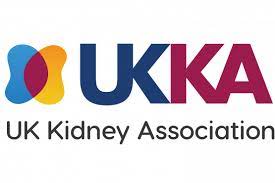The Development & Arrival of the UK Kidney Association

by
John Feehally
The UK Kidney Association was formed in 2021, an amalgamation of the Renal Association (RA) and the British Renal Society (BRS).
The prolonged discussions which resulted in the formation of UKKA are an interesting case study in organisational merger and tell us much about the landscape of the UK kidney community at the time, and over the preceding twenty years.
This piece was written in 2023, two years after UKKA finally came into being. Many from both organisations were involved in the work leading to merger, and I have spoken about recent events to a small group of the key leaders involved in the immediately preceding negotiations.
This commentary is inevitably largely my opinion of the background and events. I have in the main chosen not to mention individuals by name at any stage of this story, since criticism or congratulation may not be correctly assigned, and most of those involved are still alive and professionally active. Furthermore, it would be all too easy to mistakenly leave unnamed someone who had played a crucial role. The one exception to this policy is that I have named below four key leaders who in my view take huge credit for completing the complex processes which finally took the merger ‘over the line’
Background: why did BRS come into existence at the beginning and not join RA at that time?
![]() RA had been founded in 1950 long before nephrology were a distinct medical specialty, more than a decade before chronic dialysis and kidney transplantation became meaningful treatments for end-stage kidney disease. RA was at the beginning a purely scientific society for those with intellectual and research interests in the kidney – mostly physicians, physiologists, and urologists. From the mid-1960s as clinical nephrology emerged, it began more and more to be a forum for education, and for exchange of clinical ideas and mutual encouragement. In the 1970s some thoughts that a separate society might emerge for those interested in dialysis, leaving RA to its more scientific focus. This had happened in several other countries to the detriment of the specialty, and happily was avoided in the UK. From the mid-1980s the RA also adopted the mantle of influencing the health policy agenda nationally in favour of kidney care.
RA had been founded in 1950 long before nephrology were a distinct medical specialty, more than a decade before chronic dialysis and kidney transplantation became meaningful treatments for end-stage kidney disease. RA was at the beginning a purely scientific society for those with intellectual and research interests in the kidney – mostly physicians, physiologists, and urologists. From the mid-1960s as clinical nephrology emerged, it began more and more to be a forum for education, and for exchange of clinical ideas and mutual encouragement. In the 1970s some thoughts that a separate society might emerge for those interested in dialysis, leaving RA to its more scientific focus. This had happened in several other countries to the detriment of the specialty, and happily was avoided in the UK. From the mid-1980s the RA also adopted the mantle of influencing the health policy agenda nationally in favour of kidney care.
However, membership continued to be limited to those with a medical qualification or a scientific interest in the kidney in health and disease. This was even though renal units had been pioneers from their beginning in the development and encouragement of multi-professional team working with high levels of clinical responsibility assigned to nurses, dietitians, pharmacists, technicians, and others. Renal units had multi-professional team (MPT) working before any other clinical speciality. Consequently, specialist groups were soon established: for example, the Renal Nutrition Group (1972), Association of Renal Technologists (1975), and Renal Pharmacy Group (1980). Perhaps surprisingly no formalised UK renal nursing group emerged at that time.
By the 1980s several nephrologists were becoming increasingly prominent advocates for the renal multi-professional team and did not regard the RA as a welcoming forum where research and education for the multi-professional team could be presented, or their interests and priorities upheld. They therefore in the mid-1980s established a British Renal Symposium, an annual conference focused on the renal MPT which proved popular and successful.
![]() From that emerged in a few years a new British Renal Society, established in 1989 as a federation of the various professional specialty groups rather than an individual membership society.
From that emerged in a few years a new British Renal Society, established in 1989 as a federation of the various professional specialty groups rather than an individual membership society.
The wisdom of hindsight suggests that much later angst could have been avoided if the BRS had never come into existence, and instead the RA had welcomed all other renal health professionals into its membership and widened its appeal as well as its educational, scientific, and advocacy approaches. There were conversations particularly in the 1990s involving more than one RA President and several nephrologists who were leading spokesmen for BRS (yes, all were male). These discussions were sometimes robust, and mutual trust could never be developed sufficiently for effective negotiation.
Why did those early discussions flounder?
There were philosophical differences embedded in both organisations which amounted to mutual suspicion. There was resistance from some RA leaders to opening RA membership to all staff within the renal community, concerned that the scientific excellence of the RA would be comprised. On the other hand, BRS leaders were dissatisfied that RA was excessively focused on a narrow track of lab-based renal science and lacked an appropriate clinical voice. BRS member organisations were concerned that they would lose their voice in a new organisation, which it was inevitably expected would have predominantly medical leadership.
Another issue was organisational – RA and BRS had completely different structures. RA was a membership society with individual members paying an annual fee, and membership fees contributed most of its annual income. Whereas the BRS was a federation of the many professional societies in the renal community, with no individual members, and its major income stream was generated through the sponsorship which supported the BRS annual meeting. It was assumed by many that combining these two different structures would prove very challenging.
The financial environment when BRS was formed represents the heyday of generous commercial sponsorship in the renal world. Major competitions for market share were in full flow: several companies were competing for the burgeoning EPO market; several new immunosuppressives were appearing (tacrolimus, mycophenolate, sirolimus); there were still two companies vying for their share of the CAPD consumable market; several companies were competing for NHS contracts to build and run satellite haemodialysis facilities. In such a commercially competitive environment, companies were very generous with funding for education and research, and there was no great challenge for RA and BRS to gather the necessary sponsorship for their separate annual conferences as well as other national and local educational meetings. There was therefore no financial imperative to drive RA and BRS to collaborate or merge.
Although the idea of merger floated around, new conversations typically focussed on ‘who gets what share of kidney week money’ and suspicion that ‘we would lose our voice’ rather than any positive view of the strategic opportunities offered by a merger.
In these discussions there were regrettably some conflicts between powerful personalities in the leadership of both RA and BRS. Ultimately the block to merger at that time came down to a lack of trust, a failure of open communication, and fixed ideas on how to move forwards that were borne out of leaders focusing on organisation ideals and identity, and therefore being unable to negotiate with effective compromise.
Any progress?
For the next two decades things changed rather little. There were some informal discussions with many “false starts”. The philosophical, structural, and financial concerns remained, and were still roadblocks to significant change, and perhaps sometimes also an excuse for those who did not really want change. Some voices in RA were critical that despite BRS espousing the multi-professional team, all but one BRS President in its first two decades was a doctor. There remained a substantial difference in income between the two organisations – RA c.£3million, BRS c.£100,000. RA had a substantial secretariat. The UK Renal Registry, part of RA, had now grown to be a large employing organisation with multiple external contracts and data sharing agreements, which would need to be protected in any merger. Nevertheless, there was by the early 2000s agreement to start holding joint conferences, and in several years these were successful. This required the formation of combined programme and organising committees which in turn demonstrated that the two organisations were able to work together to arrange something that was better than that which either could achieve alone. However, tensions persisted about the differing financial goals of the conference, and RA and BRS still had differing positions on the revenue required from the meeting to meet each society’s income needs. Then in one year, plans for a combined conference had to be abandoned due to disagreement over the venue.
What changed? Why did the merger happen when it did?
The negative impact of the failure to hold that combined conference in 2017 was a trigger which made several key leaders at the time determined at last to overcome the differences and find a way to work together.
Other factors were also at play. Both RA and BRS still relied on financial support from industry and the amount of funding available had decreased substantially. This was particularly a challenge for the BRS, which relied almost exclusively on income from the annual conference to support its other activities. It became clear that the UK could no longer support two separate renal conferences each year. In part this reflected the change in the renal marketplace with few new products entering the market, and several high-profile products from the 1990s moving out of patent. Then finances became even tighter after the financial crisis of 2008. And still further tightened during the COVID-19 pandemic and associated lockdowns, which happened as the merger talks were underway. There was now a growing consensus in the renal community that the multi-professional working, recognised as a key strength in day-to-day clinical work in renal units, should be reflected in its professional society. Both clinical and research projects involving the multi-professional team were becoming more commonplace, and there was a steadily growing confidence that merger was possible without compromising the many long-established features of RA including its scientific excellence. More work was being done involving RA and BRS leaders together on a range of committees and projects, with more success, and mutual trust was slowly building. A new, more diverse generation of leaders were at the helm in both organisations, with the desire and common interest to progress a merger, and a commitment to the hard work and problem solving which were necessary to achieve this.
Timeline to merger
Substantive discussions at last began between RA and BRS leaders in 2018.
Four individual leaders deserve particular credit for leading these discussions to a successful conclusion. They are:
 Graham Lipkin, RA President
Graham Lipkin, RA President
 Maarten Taal, BRS President
Maarten Taal, BRS President
 Sharlene Greenwood, BRS President
Sharlene Greenwood, BRS President
 Ron Cullen, RA Chief Executive
Ron Cullen, RA Chief Executive
By September 2019, they were able to declare a significant degree of common ground, the fruit of many and prolonged informal, unrecorded discussions. This common ground was summarised at the time as follows.
- Only formation of a new organisation through joining of existing groups will actually deliver all the hoped-for benefits,
- This must be a new organisation with a new name and new governance structures. It will involve RA, BRS and several other professional affiliates representing groups within the MPT (BRS now had agreement from the affiliate organisations to negotiate on their behalf).
- It would not be a merger between two legal entities, the RA and BRS, but a formation of a new
- The continued functioning of the UK Renal Registry with minimum disruption must be assured. The Registry employed some 40 people and held many contracts with trusts and NHS Digital. It would be highly disruptive to the Registry to change the Charity Commission entity and it could risk the effective functioning of the Registry. However, this necessity should not privilege the RA in the new structure. Indeed, there would be new opportunities for more effective MPT input into the Registry.
- The existing RA secretariat would act as a chassis for the new organisation. A new name, structure and representation would ensure this was seen as a new organisation, including appropriate representation of all partners.
- The new organisation would be a membership organisation – the base being the existing 1200 members of the RA. Ideally it was to be an individual membership organisation but there also needed to be opportunities for affiliates to join as a body but with one vote.
- It would function democratically – one member, one vote – with equity of opportunity for all members. Although there may need to be restricted access to relevant officer posts to ensure appropriate candidates were elected (e.g., the new role of a clinical vice-president representing the multi-professional team).
- Officers would be in general elected by the membership, but some specialist roles (e.g., secretary or treasurer) could be appointed.
- There would be two Presidents, one medical and one from an MPT background.
- All committees and special interest groups would be co-chaired by a doctor and MPT member (unless this was irrelevant, e.g., the SpR (Specialist Registrar) Club).
- Affiliates could join as a ‘block’ but with 1 vote; the level of service it received being proportionate to the income contributed. But it was hoped that there would be both individual and organisational membership from all the existing BRS Affiliate MPT groups.
- A provisional membership fee of £30 was proposed.
- Existing designated and restricted funds of each organisation must be respected.
To move further forward, RA and BRS agreed in September 2019 to sign a Memorandum of Understanding. More formal meetings then negotiated the detail and process of merger and the structure of the new organisation. This was based on five ‘workstreams’, each with representative membership: governance & structure, finance & membership, academic, clinical, paediatric.
By November 2020 there had been substantial progress, a clear indication of goodwill and commitment from all parties, with no weakening of the principles delineated in September 2019. Difficulties and blocks which might threaten the merger were rather few. The workstreams had proved effective.
Governance
Several potential pitfalls had been worked through, not least an agreed name of the new organisation. Once it was decided that ‘kidney’ rather than ‘renal’ would be the descriptor (in line with the increasing interest in ‘demystifying’ the public understanding of kidney issues) UK Kidney Association soon found favour.
An organisational structure was soon close to approval, and only underwent minor adjustments to become the present established structure (Governance & structure | The UK Kidney Association).
Careful wording was chosen with legal advice to reflect the ‘new’ organisation being created, which did not destabilise the existing structures, notably the Registry, but nevertheless satisfied the needs of the Charities Commission and Companies House. If an entirely new company had been created all staff contracts and contracts with external agencies (for example NHS Digital) would need to be renegotiated. Instead, RA continues as a business, but trades as UKKA (this is a commonly used stratagem when a ‘new’ organisation is formed, but avoiding transfer issues is advantageous).
Finance
It was agreed that BRS would transfer c. £200K of assets into the new organisation. A membership fee structure was agreed that offered different fees for different categories of staff, reflecting differences in income.
Read here the FINAL ‘Heads of Terms’ for UKKA.
Communications and final merger decision
Coordinated communication to members and affiliates of both RA and BRS about the proposed merger began early in December 2020, with video presentations by the respective presidents of the purpose and benefits of merger, along with a full description of the proposed new governance arrangements. (About UKKA | The UK Kidney Association) . A four-week voting window closed in mid-January 2021, and there was very strong support for the merger in both organisations, more than 80% of those who voted supporting the merger. UKKA came into existence, RA and BRS ceased to exist in April 2021.
The opportunity cost of merger
In approving the success of the merger, it is important not to lose sight of the opportunity costs of achieving it.
Volunteer leadership in organisations such as RA and BRS already demanded much time and commitment. To keep the organisations running, and to work on the merger required sustained energy and optimism over a long period of time by leaders of both RA and BRS. Inevitably by committing so intensely to merger discussions, they must have left some aspects of their professional lives to go more slowly – be it clinical care, research, or management. And will very probably have meant even more than usual spent time away from home and family. But I encountered no hint of regret.
The RA secretariat had to contribute much time and effort to the merger while ensuring the governance, finances and functions of RA were maintained without deterioration. A new constitution, new terms of reference for committees and special interest groups, new policies, and procedures for all aspects of the new organisation’s work needed to be prepared. Policies for high profile issues such as Equality & Diversity, Confidentiality, and Data Protection needed to be robustly established. Employed staff needed to be properly cared for, and their employment rights and continuity of contract needed to be protected. But at the same time, it was necessary to ensure that ‘business as usual’ continued – both RA and BRS had to function actively and effectively until the day the new organisation came into being. Finances, governance, and business continuity, most notably for the UK Renal Registry, had to be maintained.
Why did the merger succeed?
There was a very strong consensus amongst the leadership of both organisations that a single organisation was the best option for the kidney community and this was maintained throughout the negotiations. That said, those negotiations took a great deal of time and resilience and were sometimes uncomfortable. RA and BRS negotiators each conscious firstly of their responsibility to do the very best for the membership of their existing organisation while inevitably making compromises to form the new organisation. And then they had to meet the challenge of bringing the membership of their respective organisations with them. Perhaps unexpectedly, the name of the new organisation did not require extended debate. The choice of Kidney rather than Renal reflecting the growing moves at the time to simplify and clarify the public facing perception of its work.
Reaching agreement on membership and the funding structure for the new organisation were challenging, predictable given the very different organisational models which had to be integrated.
Leadership roles, titles, organisational hierarchies – the detail of all these, nuances of understanding of roles and reporting structures, perceived slights, and disadvantages, all come into increasingly sharp relief as the final structure nears agreement and made the final few steps more of a struggle than some expected.
Critical negotiating skills
What is clear looking back, is that the leadership teams of both RA and BRS displayed much goodwill as well as a determination to succeed, which were critical to the ultimate success of the project. Calm reasoned negotiating skills were in evidence. Each recognised the challenges faced by the other organisation and allowed the other the space and time needed to work through these. On the other hand, willingness to compromise was occasionally matched with necessary stubbornness on critical issues.
The new UKKA – strengths and weaknesses
Looking back only two years after the merger was completed, membership has increased – in 2023 including over 1,500 doctors, scientists and multi-professional team members.
Those who led the merger are encouraged:
‘I anticipated that there would be a transitional phase during which the UKKA developed its own identity and ways of working. But this has happened surprisingly quickly’.
‘The UKKA has rapidly become the unified, vibrant and effective organisation we envisaged’.
‘…we are actually 10 years further forward than I was expecting to be at this point’.
‘Although the merger was preceded by a new determination for all professional groups to work together, this could not have happened so effectively without the opportunity to start afresh with the new organisation’.
There has been more practical ‘working together’ on boards and committees by the previously separate professional groups – exemplified by the highly effective Covid response of the kidney community, which could never have been achieved if the old organisations were still working in silos.
On the other hand, the same leaders see opportunities which must be taken for further progress to true integration. There was an urge for the new organisation to be ‘everything to everyone’, but reflection and action are needed to ensure that all groups are advantaged by the merger. The merger, though structurally complete, still represents the start of a journey not an end, not all affiliated groups are yet truly ‘on board’.
Inevitably the period of merger made the organisation more inward looking and it must now ensure a proper focus on relationships with external partners.
Nevertheless, merger is achieved, the feared adverse consequences have been largely avoided, and UKKA is already through its achievements proving its success. The formation of UKKA leads the way internationally in establishing a single national renal professional organisation which is truly promoting multi-professional working.
Last Updated on January 9, 2024 by John Feehally